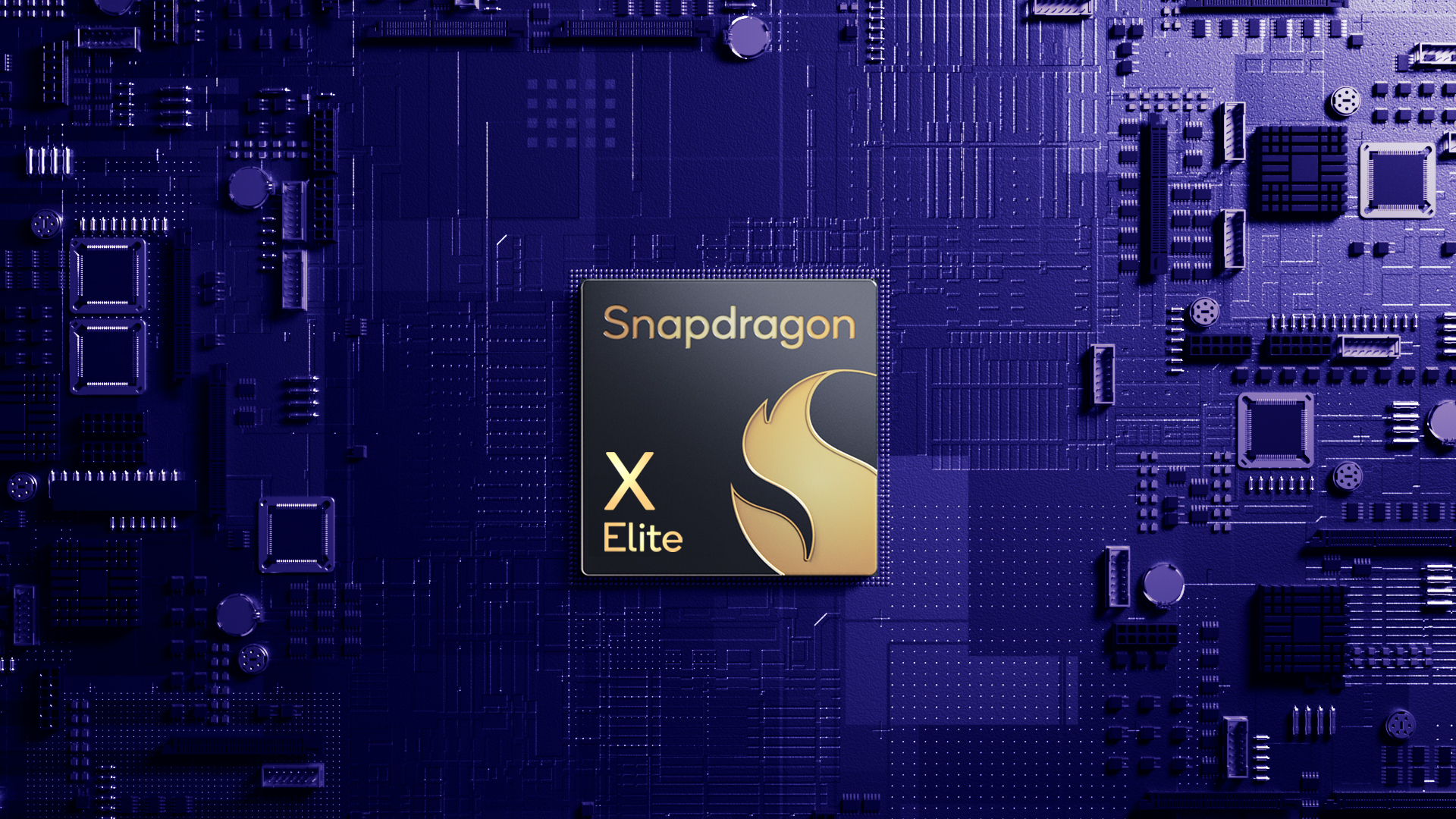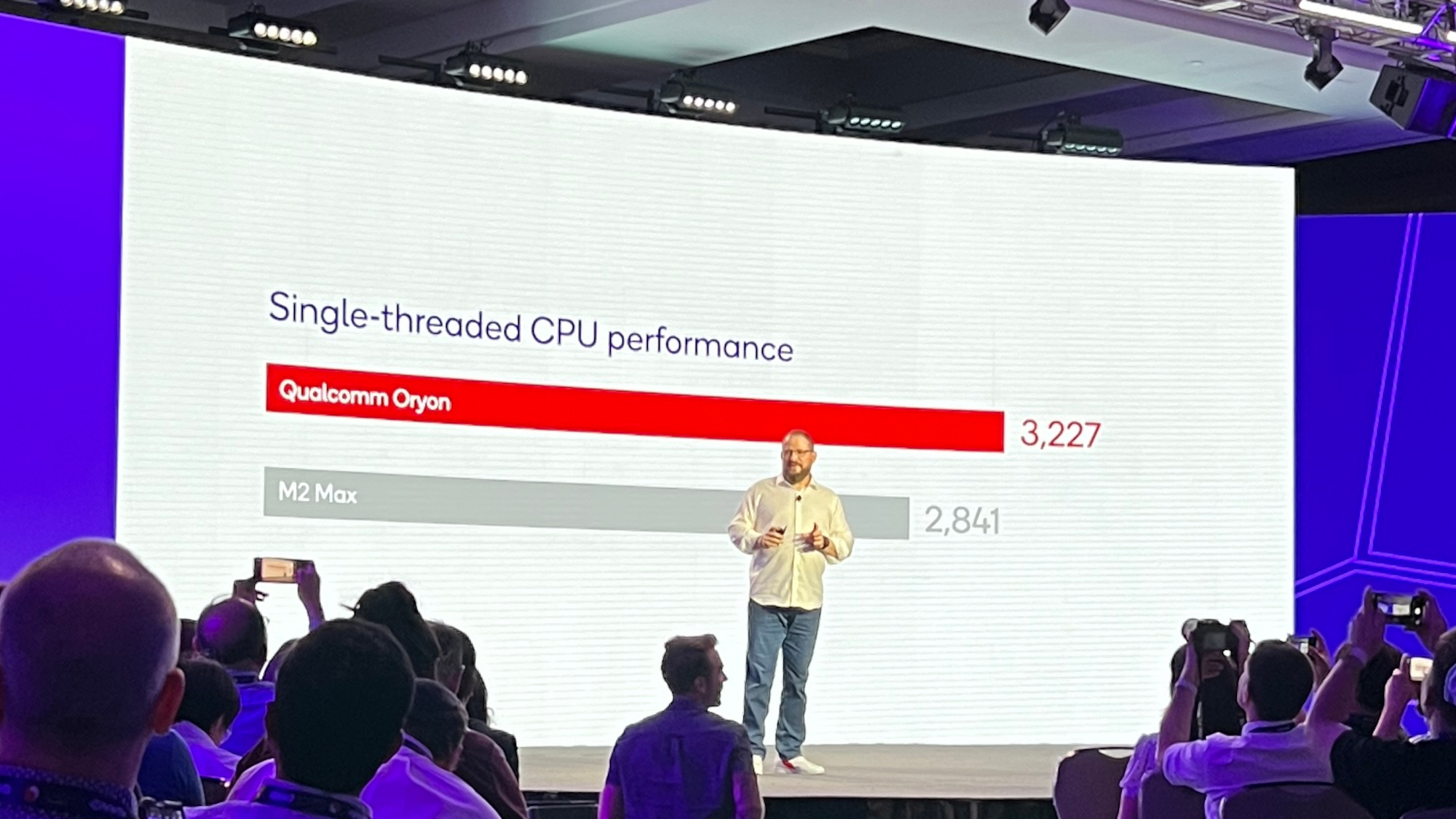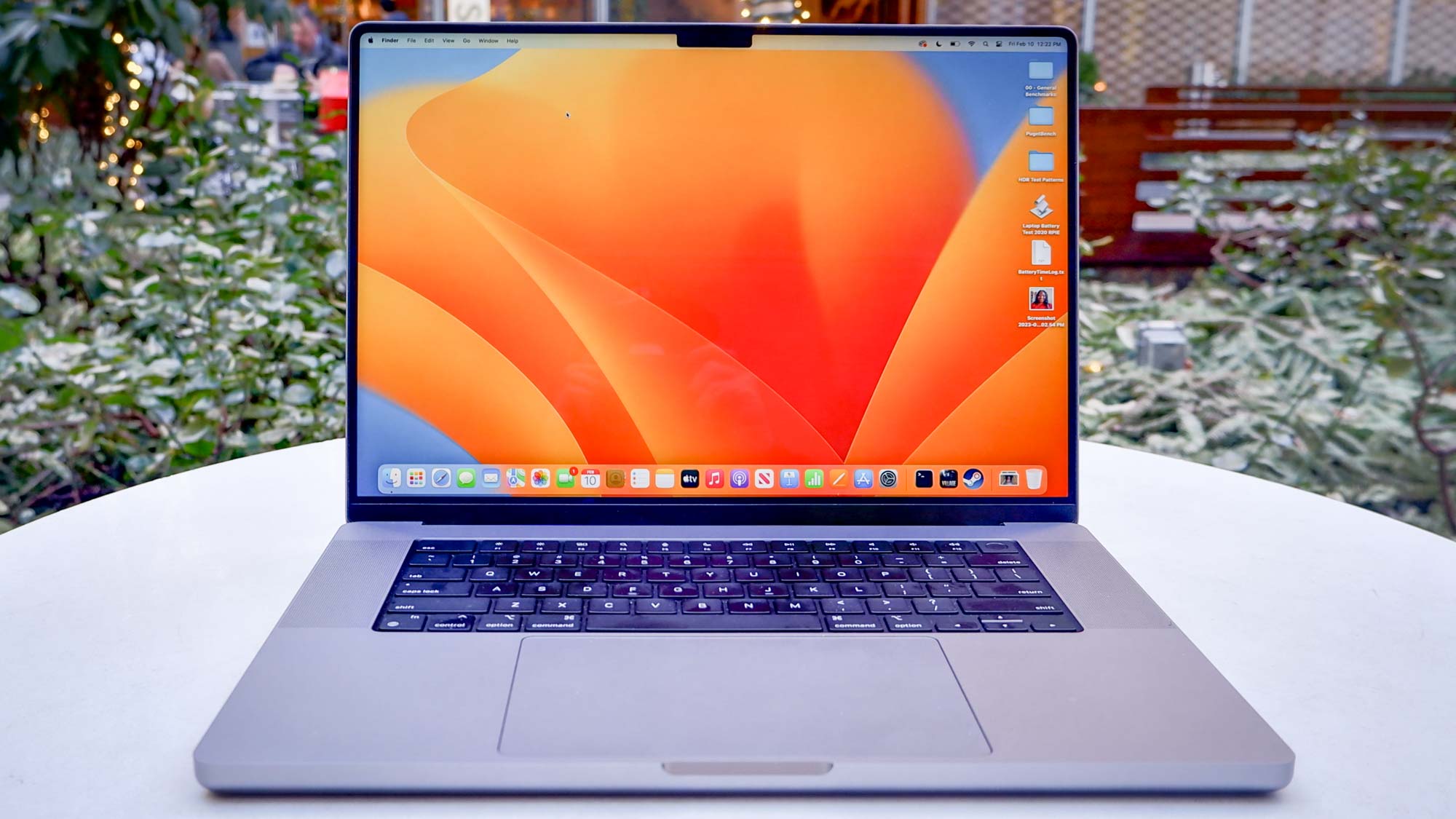I’m excited for the Snapdragon X Elite — 3 reasons why it could be a MacBook beater

Qualcomm fired a warning shot at Intel and Apple this week when it announced the Snapdragon X Elite mobile CPU platform. Built on the same 4nm process as the new Snapdragon 8 Gen 3, this ARM-based processor could be the next big thing in computing if Qualcomm’s lofty promises hold true.
You see, according to the company, the X Elite has 50% faster peak multi-threaded performance than the powerful Apple M2 chip. That, my friends, is one heck of a boast (until Apple's M3 Mac event next week of course).
Apple has been crushing it with its M-series chips, which have been all but unrivaled since they debuted in 2020. That’s great, but it’s about time someone made the Cupertino-based tech giant sweat. The Qualcomm Snapdragon X Elite could be the M-series rival we’ve been waiting for.
Based on what I’ve seen during my time at Snapdragon Summit 2023, I find the Snapdragon X Elite incredibly exciting. Not only does it outperform its rivals (according to Qualcomm’s math), but its on-device generative AI tech could match or exceed rivals like ChatGPT and Bing Chat. That last part certainly gives Qualcomm an edge over Apple, who will reportedly spend up to $1 billion a year on generative AI to catch up to its competitors.
The Snapdragon X Elite might be the CPU that puts the best Windows laptops on a level playing field with the best MacBooks. Here are three reasons why the X Elite excites me.
A potential M-series challenger

Qualcomm says its Snapdragon X Elite chip is the “most powerful, intelligent, and efficient processor in its class for Windows.” That’s a big claim, but if Qualcomm’s charts are accurate, the X Elite seems like it will smoke competitors like Intel, Apple and AMD.
Snapdragon X Elite features 4 CPU cores, 4 GPU cores and 4 NPU cores — totalling 12 high-performance cores. The cores can reach up to 3.8GHz and hit 4.3GHz with dual-core boost. Regarding its memory architecture, the processor has 42MB total cache and up to 136GB/s of bandwidth.
Get instant access to breaking news, the hottest reviews, great deals and helpful tips.

Those numbers are impressive, but how do they stack against Apple M2 chips? According to Qualcomm, the X Elite has 50% faster peak multi-threaded performance than the M2 chip found in the MacBook Air M2. Computers packing Apple silicon are some of the fastest devices we’ve ever tested, but if Qualcomm’s claims are true, it seems M2 (and maybe M3) might be outclassed in performance thanks to the X Elite’s alleged higher Thermal Design Power (TDP).
You can read a fuller breakdown of Qualcomm’s numbers for the X Elite in our hub linked in the intro. If we or another independent tester can verify Qualcomm’s claims, the world might see an Apple silicon killer. Well, that’s unless Apple crashes Qualcomm's Snapdragon X Elite party with the M3 chip that will reportedly get announced next week at the company’s ‘Scary Fast’ event.
On-device generative AI

The tech world has been obsessed with generative AI for most of 2023 — with major players like Microsoft, Google and others sinking billions of dollars into this technology. It’s no surprise to see Qualcomm boasting about the AI capabilities of Snapdragon X Elite and Snapdragon 8 Gen 3 alike. In fact, the company says the X Elite is expressly built for AI.
I’ve been skeptical at best and pessimistic at worst about generative AI — and not just because ChatGPT said I’m dead. While I still need convincing that LLM (Large Language Model) technology is the wave of the future, applications like Microsoft Copilot have shown me generative AI is more than a cheap gimmick. The Qualcomm AI engine is also softening my stance.
Qualcomm says its on-device AI can generate responses in less than a second. I saw this first hand at the Snapdragon Summit during a demonstration featuring a laptop packing the X Elite chip and another featuring an Intel Core i7 processor.
The person who was demoing wrote “cat with green eyes” as a prompt into both computers and hit enter on them simultaneously. Sure enough, an image of a cat with green eyes appeared almost instantly on the X Elite machine, whereas it took about 20 seconds for the picture to pop up on the Intel machine.
Next, the demoer typed “plan me a three-day vacation in the Finger Lakes of New York” into both laptops. Not only did the X Elite-driven notebook offer an answer in the blink of an eye, it also provided a more detailed account compared to the Intel machine — which took forever to respond. According to the demoer, the X Elite laptop delivered a more accurate answer, though he rightfully said generative AI tends to offer different answers even when prompts are written on the same device.
What was perhaps most impressive about this demo is that neither laptop was connected to the internet. The responses came right from the machines. I was told each manufacturer will naturally have their own generative AI application, and that there won’t be a “Snapdragon AI” app, for instance. The X Elite exists to boost the capabilities of whatever generative AI program a machine has installed.
Promised long battery life
According to Qualcomm, the X Elite platform promises to deliver “multiple days of battery life.” When asked about this during a Q&A session at Snapdragon Summit, we were told the company wasn’t ready to disclose exact numbers.
“Multiple days of battery life” could be accurate, depending on how you use a laptop. Theoretically, if you only use a notebook for a couple of hours a day, it could last you for a few days. I’m not saying that’s how Qualcomm made its battery life claim — it’s just the first thought that pops up in my cynical New Yorker brain.

Right now, the MacBook Pro 16-inch (2023) is the longest-lasting laptop we’ve ever reviewed. In our lab test, which involves continuous web surfing with the display at 150 nits of brightness, the 16-inch MacBook Pro we tested — featuring an M2 Max chip with a 12-core CPU and 38-core GPU, a 16-core Neural Engine, 96GB of unified memory and 4TB of SSD storage — lasted for a mind-boggling 18 hours and 56 minutes! That might not be “multiple days” but that’s still impressive battery life.
Even if X Elite-driven laptops doesn't last for days, anything that tops the 16-inch MacBook Pro would be a huge victory —- setting a new standard for Windows laptop battery life just as M-series chips did when they first launched.
Outlook
We’ll have to wait until the middle of 2024 to see if the Snapdragon X Elite platform is the next big thing for computers. But even if the Apple M3 chip steals Qualcomm’s thunder next week, the company says it plans to iterate on X Elite chips moving forward. If Qualcomm doesn’t overthrow Apple now, perhaps it might sometime in the future.
More from Tom's Guide
- Snapdragon Seamless is here to take on the Apple ecosystem
- Apple M3 vs M3 Pro vs M3 Max vs M3 Ultra
- The best Android phones

Tony is a computing writer at Tom’s Guide covering laptops, tablets, Windows, and iOS. During his off-hours, Tony enjoys reading comic books, playing video games, reading speculative fiction novels, and spending too much time on X/Twitter. His non-nerdy pursuits involve attending Hard Rock/Heavy Metal concerts and going to NYC bars with friends and colleagues. His work has appeared in publications such as Laptop Mag, PC Mag, and various independent gaming sites.

